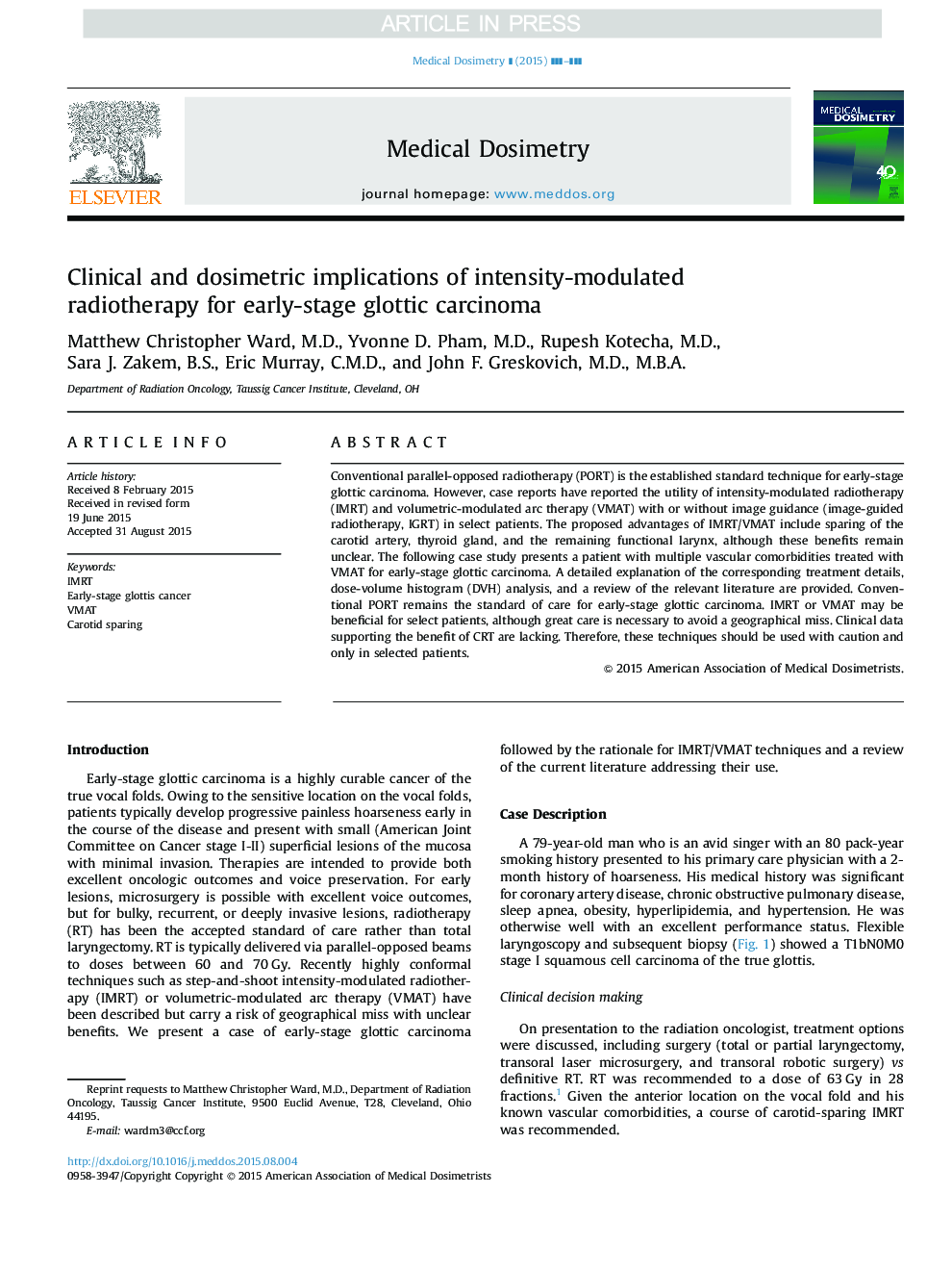| Article ID | Journal | Published Year | Pages | File Type |
|---|---|---|---|---|
| 1884772 | Medical Dosimetry | 2016 | 6 Pages |
Abstract
Conventional parallel-opposed radiotherapy (PORT) is the established standard technique for early-stage glottic carcinoma. However, case reports have reported the utility of intensity-modulated radiotherapy (IMRT) and volumetric-modulated arc therapy (VMAT) with or without image guidance (image-guided radiotherapy, IGRT) in select patients. The proposed advantages of IMRT/VMAT include sparing of the carotid artery, thyroid gland, and the remaining functional larynx, although these benefits remain unclear. The following case study presents a patient with multiple vascular comorbidities treated with VMAT for early-stage glottic carcinoma. A detailed explanation of the corresponding treatment details, dose-volume histogram (DVH) analysis, and a review of the relevant literature are provided. Conventional PORT remains the standard of care for early-stage glottic carcinoma. IMRT or VMAT may be beneficial for select patients, although great care is necessary to avoid a geographical miss. Clinical data supporting the benefit of CRT are lacking. Therefore, these techniques should be used with caution and only in selected patients.
Related Topics
Physical Sciences and Engineering
Physics and Astronomy
Radiation
Authors
Matthew Christopher M.D., Yvonne D. M.D., Rupesh M.D., Sara J. B.S., Eric C.M.D., John F. M.D., M.B.A.,
